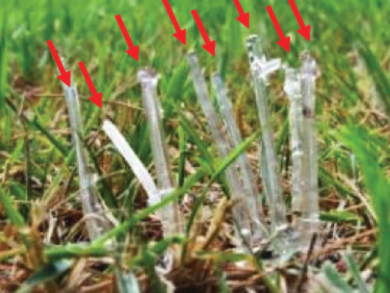Nanogenerators (NGs) that produce electrical energy from mechanical movement could play an important role in powering portable devices. Typically, such NGs consist of a piezoelectric nanomaterial (e.g., ZnO) that is embedded in a polydimethylsiloxane (PDMS) matrix, forming film-like materials. Such materials are difficult to produce on a large scale and typically harvest energy only when moved along certain directions.
Ki-Seok An, Korea Research Institute of Chemical Technology, Daejon, Republic of Korea, and colleagues have developed a flexible fibre-like NG material that can generate electricity when moved along arbitrary directions. In the first step, a titanium fiber was subjected to anodic oxidation, which formed TiO2 nanotube (NT) arrays on the fiber’s surface. The TiO2 was then hydrothermally converted to the perovskite PbTiO3 without loss of the NT array structure.
Two of the obtained fibers were assembled into a core-shell NG device by embedding them in PDMS. Such devices could generate 69.74 ± 10.97 mV when moved by an air current. According to the researchers, these findings are a step towards the use of NGs for energy harvesting from wind and for applications in portable devices or sensors.
- Toward Arbitrary-Direction Energy Harvesting through Flexible Piezoelectric Nanogenerators Using Perovskite PbTiO3 Nanotube Arrays,
Young Bum Lee, Jin Kyu Han, Suttinart Noothongkaew, Seong Ku Kim, Wooseok Song, Sung Myung, Sun Sook Lee, Jongsun Lim, Sang Don Bu, Ki-Seok An,
Adv. Mater. 2016.
DOI: 10.1002/adma.201604500



